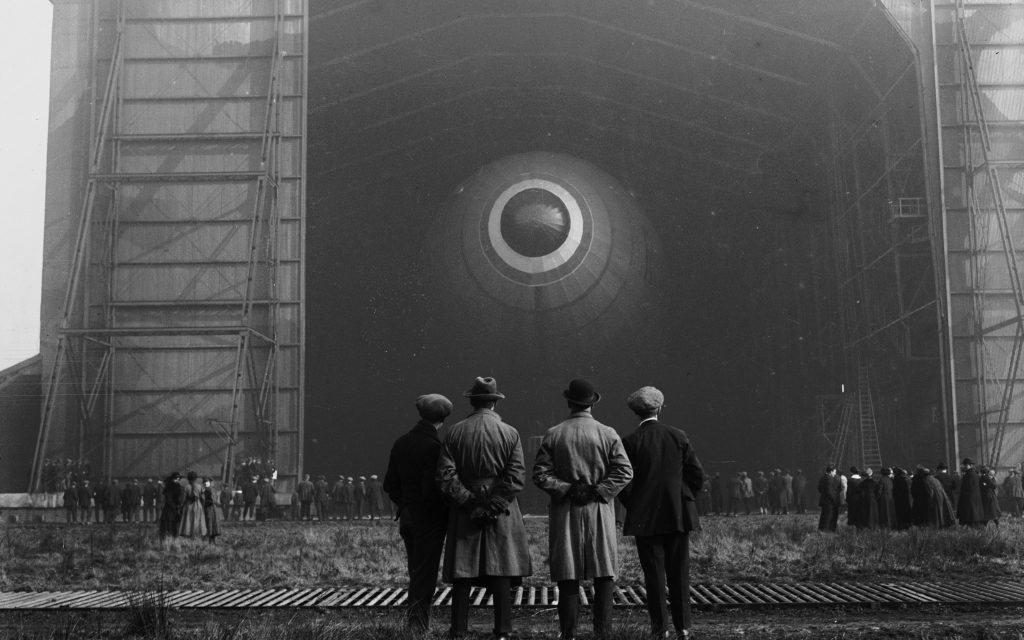The huge R33 airship took to the skies for the first time on March 6, 1919 after being built at Barlow, next to Drax Power Station, near Selby.
It was the last of three giant airships to be built in the village, which was at the forefront of the British aviation industry for ten years from the First World War.
The R33 was one of a small number of so-called ‘gas bags’ flown by the Royal Naval Air Service – it clocked up more than 237 hours of flying time and was in service for 10 years, completing military and civilian tasks including being used by the police to monitor traffic.
Leading the way in aviation technology, the R33 took innovation to new levels when it was used to trial launching pilotless biplanes from underneath its huge canopy.
The site of the workshop where the R33 was designed and built is now known as the Barlow Mound, which is on the edge of the 350-acre Skylark Nature Reserve created by Drax, next to the power station.
On April 24 youngsters will be able to build a replica R33 airship at a special workshop being held at the Skylark Nature Reserve. The event is part of the energy company’s efforts to encourage young people to consider studying science, technology, engineering and maths (STEM).
Andy Koss Drax Power CEO said:
“Barlow is a small village, but it played a vital role in developing and building these airships a century ago.
“We want to use this anniversary to inspire a new generation to consider studying STEM subjects and develop the skills businesses like ours need to continue to grow, helping to build a strong regional economy in the north.”
To find out more about the replica airship event – follow Drax Group on Facebook
As well as encouraging more people, including female students, to study STEM subjects, Drax has also announced that it will increase the number of apprentices it is taking on this year to 12 – doubling the number of apprenticeships available in the past two years.
ENDS
Media contacts:
Mark Duffell
MCD Communications Ltd
E: mduffell@mcdcommsco.uk
T: 07969080272
Jessica Gorton
Drax Group Press Officer
E: jessica.gorton@drax.com
T: 07712677177
Notes to Editors
Pic caption: The massive British airship R33 in its hangar as it prepares for its first ever flight in March 1919. R33 was constructed by up to 1,500 workers at the aerodrome in Barlow, North Yorkshire. Via Getty Images.
- The R33 earned itself a reputation for being the luckiest airship after it survived two almost disastrous incidents: Firstly it was ripped open during a flight in 1921 and then was torn free from its moorings in high winds, drifted out to sea and had to be guided back to land by its crew.
- Its luck ran out when the airships’ popularity declined. It was dismantled in 1928
- The Barlow workshop and site was sold by the airship’s builders, Sir W G Armstrong Whitworth & Co Ltd in 1920 and was turned into a military site, before it became part of Drax in 1980.
About Drax
Drax Group’s ambition is to enable a zero carbon, lower cost energy future. Its 2,600-strong staff operate across three principal areas of activity – electricity generation, electricity sales to business customers and compressed wood pellet production.
Power generation:
Drax owns and operates a portfolio of flexible, low carbon and renewable electricity generation assets across Britain. The assets include the UK’s largest power station, based at Selby, North Yorkshire, which supplies six percent of the country’s electricity needs.
Having converted two thirds of Drax Power Station to use sustainable biomass instead of coal it has become the UK’s biggest renewable power generator and the largest decarbonisation project in Europe.
Its pumped storage, hydro and energy from waste assets in Scotland include Cruachan Power Station – a flexible pumped storage facility within the hollowed-out mountain Ben Cruachan. It also owns and operates four gas power stations in England.
B2B supply:
Drax owns two B2B energy supply businesses:
- Haven Power, based in Ipswich, supplies electricity and energy services to large Industrial and Commercial sector businesses.
- Opus Energy, based in Oxford, Northampton and Cardiff, provides electricity, energy services and gas to small and medium sized (SME) businesses.
Pellet production:
Drax owns and operates three pellet mills in the US South which manufacture compressed wood pellets (biomass) produced from sustainably managed working forests. These pellet mills supply around 20% of the biomass used by Drax Power Station in North Yorkshire to generate flexible, renewable power for the UK’s homes and businesses.
For more information visit www.drax.com/uk












